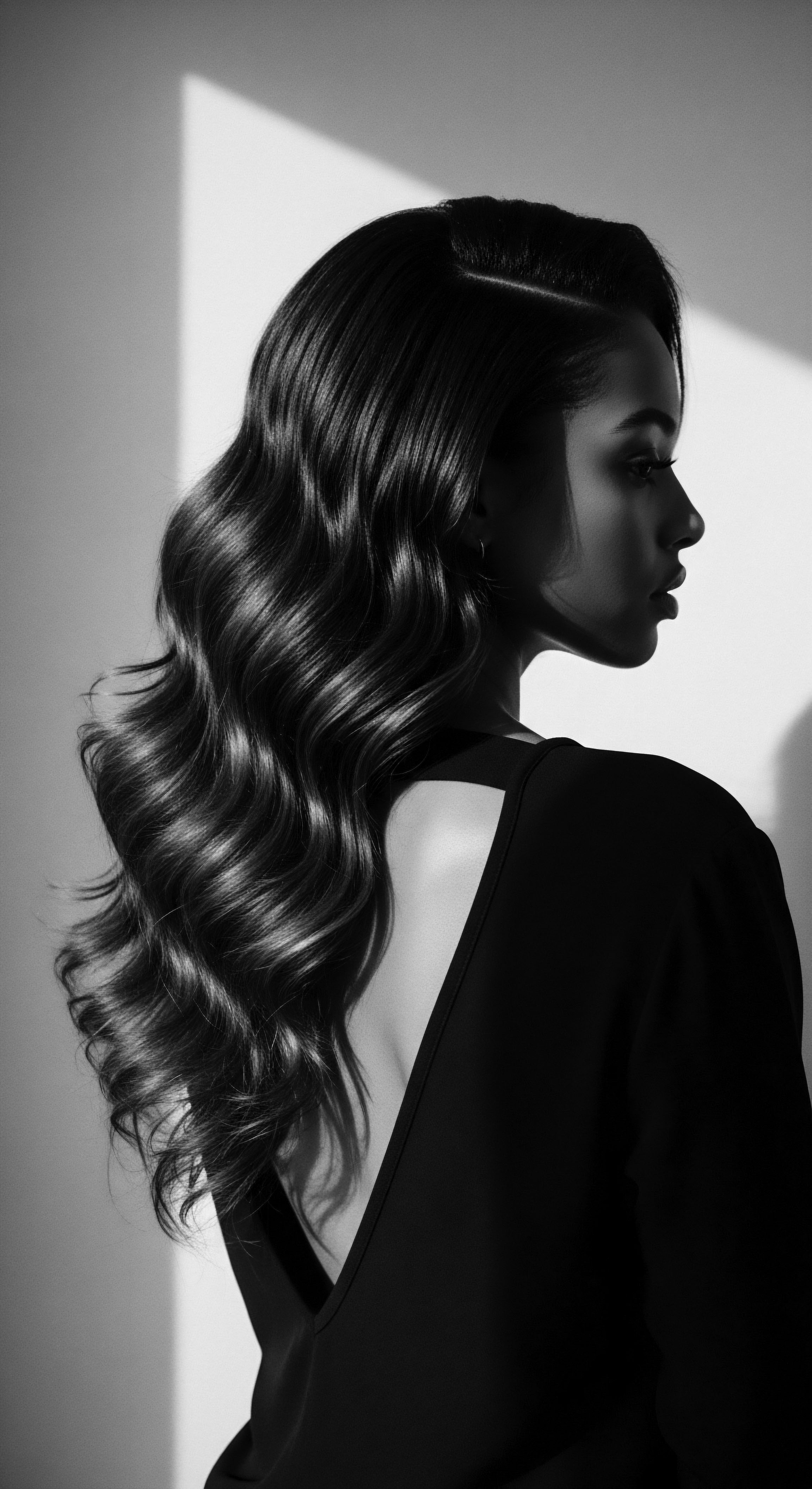
Fundamentals
The Textured Hair Care Heritage stands as a living testament within Roothea’s archives, a profound designation that reaches beyond mere grooming routines. It signifies the collective wisdom, practices, and traditions passed down through generations, particularly within Black and mixed-race communities, concerning the nurturing, styling, and celebration of hair that possesses natural coils, curls, and waves. This is not simply a collection of methods; it represents a deep ancestral connection, a continuous dialogue between the past and present, honoring the unique biological structure of textured hair and its cultural significance.
At its simplest, the Definition of Textured Hair Care Heritage encompasses the accumulated knowledge and customary rituals that have historically guided the care of hair possessing distinct curl patterns. This inherited understanding extends from the selection of natural ingredients, often drawn from indigenous botanicals, to the intricate techniques of cleansing, conditioning, detangling, and adornment. It is a system of care born from intimate acquaintance with the hair’s inherent characteristics, a recognition of its specific needs, and a reverence for its diverse expressions across continents and through time.
The fundamental Meaning of this heritage is rooted in resilience and identity. For communities whose ancestral lands are rich with specific flora, hair care often began with direct engagement with the natural world. Shea butter, for instance, sourced from the karite tree, has been a staple across West Africa for centuries, revered for its moisturizing and protective properties for both skin and hair. This practical application of botanical knowledge, honed over millennia, forms a foundational layer of the Textured Hair Care Heritage, underscoring a harmonious relationship with the environment.

Ancestral Echoes in Daily Rituals
From the earliest communal gatherings for hair styling in ancient African societies to contemporary family moments, the heritage of textured hair care has always been interwoven with social bonding. These sessions served as conduits for storytelling, for imparting wisdom, and for strengthening familial and communal ties. The gentle act of hands working through strands, applying balms, and crafting styles was, and remains, a sacred exchange, reinforcing cultural identity and transmitting traditional knowledge from one generation to the next.
Textured Hair Care Heritage is the enduring legacy of knowledge, practices, and cultural reverence for coiled, curled, and wavy hair, passed through generations.
The initial understanding of Textured Hair Care Heritage invites us to consider hair not merely as a biological appendage, but as a living canvas that reflects lineage and belonging. It is a direct link to the ingenuity of ancestors who, without modern scientific tools, deciphered the requirements of their hair and devised sophisticated methods of care and adornment. This foundational Explanation provides a gateway into the deeper complexities of hair’s role in cultural expression, communal health, and personal identity.
Understanding this heritage also calls for an appreciation of the inherent differences in hair types. Textured hair, with its unique follicular structure, requires a specific approach to maintain its health and vibrancy. This biological reality necessitated distinct care regimens, moving away from universal, often Eurocentric, beauty ideals. The heritage acknowledges and celebrates this distinctiveness, advocating for methods that respect the hair’s natural inclinations rather than attempting to alter its fundamental character.

Intermediate
Moving beyond the foundational tenets, the intermediate Interpretation of Textured Hair Care Heritage reveals its dynamic evolution across diverse diasporic communities. This concept extends beyond a simple chronology of practices; it encompasses the adaptive brilliance of people who, despite forced migration and cultural disruption, maintained and innovated their hair care traditions. It speaks to a profound continuity, where ancient wisdom was reshaped by new environments and circumstances, yet retained its core spiritual and cultural significance.
The journey of Textured Hair Care Heritage across the transatlantic passage, for example, saw ancestral methods meet new botanical resources and oppressive societal pressures. Enslaved Africans, stripped of many aspects of their identity, often held onto their hair traditions as a vital link to their homeland and selfhood. The practice of hair braiding, which in Africa denoted status, tribal affiliation, and marital standing, transformed into a covert language of resistance and survival in the Americas. This adaptability underscores the profound resilience embedded within the heritage.
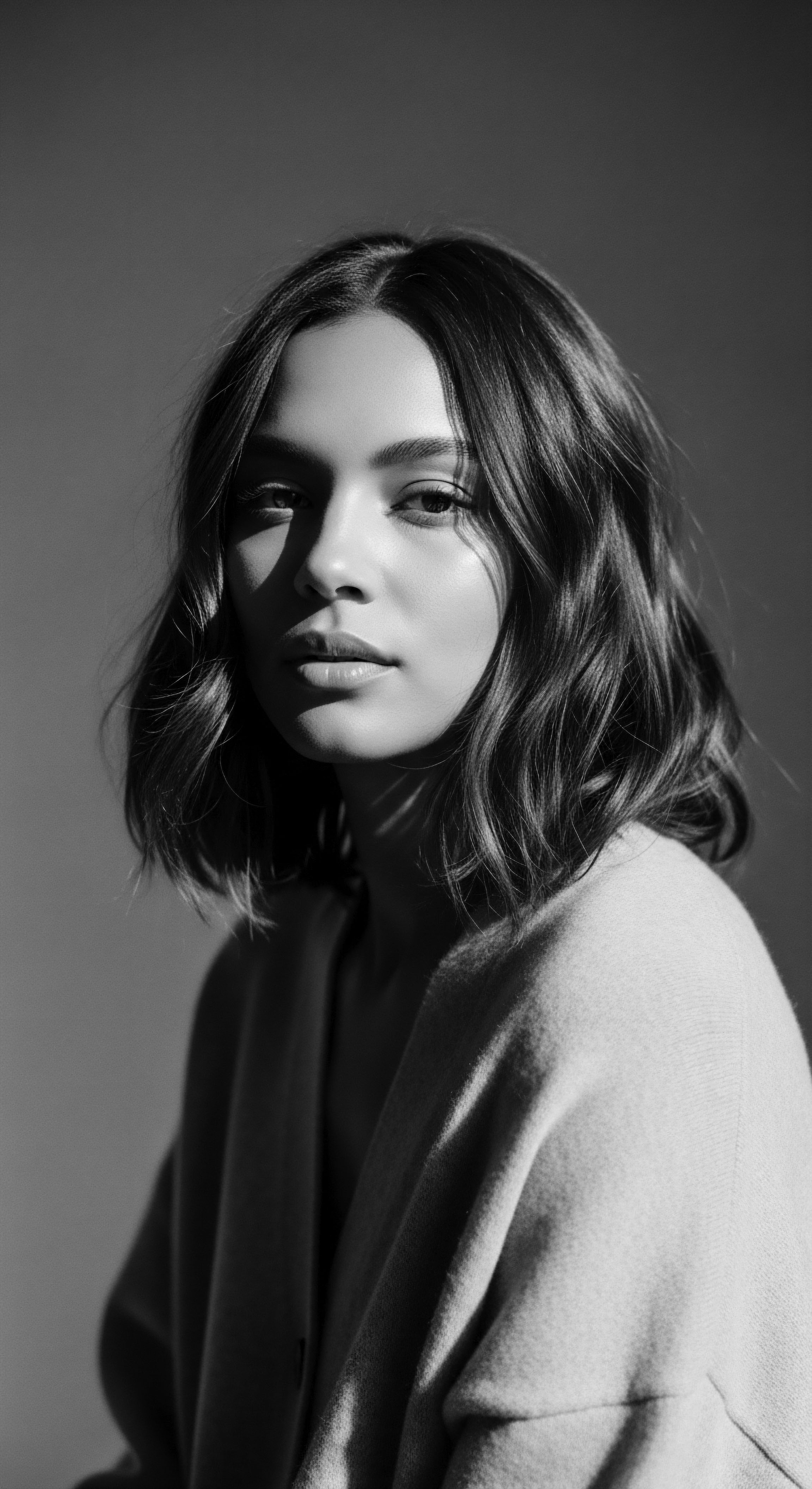
The Resilience of Hair as Cultural Expression
Consider the profound ways in which traditional hair care practices became acts of defiance. During the era of slavery, particularly in regions like colonial Colombia, women of African descent developed ingenious methods of communication through their hairstyles. In the community of San Basilio de Palenque, the first free African settlement in the Americas, women intricately braided patterns into their hair that served as clandestine maps for escape routes through swamps and forests.
They would also conceal gold nuggets and seeds within their coils, ensuring both sustenance and a means of economic survival upon reaching freedom (Grajales, 2023). This remarkable historical example demonstrates how hair care was not merely aesthetic, but a powerful tool for liberation and community building, solidifying its place as a cornerstone of collective memory and heritage.
Beyond styling, Textured Hair Care Heritage reveals a powerful history of cultural adaptation, resilience, and covert communication through hair.
This layer of the Textured Hair Care Heritage illuminates how practices shifted from purely communal to intensely personal, yet never lost their collective resonance. The creation of tools from available materials, the substitution of familiar plants with new ones found in foreign lands, and the development of new protective styles all attest to an unbroken chain of ingenuity. This constant adaptation and preservation of ancestral techniques, often in the face of immense adversity, highlights the deep-seated value placed on hair as a symbol of dignity and a repository of shared identity.
The intermediate Delineation of Textured Hair Care Heritage also brings into focus the scientific rationale that often underpins traditional practices. While ancestors might not have articulated their methods in terms of molecular biology, their observations and remedies often align with modern understanding of hair structure and scalp health. For instance, the traditional use of certain plant extracts for scalp conditioning or hair strengthening finds validation in contemporary phytochemistry, where compounds are identified that soothe inflammation or promote hair vitality.

Connecting Ancestral Knowledge to Modern Science
The meticulous care involved in preparing traditional ingredients, such as fermenting certain seeds or infusing oils with herbs, was not arbitrary. These processes often enhance the bioavailability of beneficial compounds or create more stable formulations, intuitively mirroring modern scientific principles of extraction and preservation. The inherited wisdom, therefore, was a form of empirical science, passed down through oral tradition and practical application, ensuring the sustained well-being of textured hair.
The following table illustrates some traditional ingredients and their contemporary scientific recognition, showcasing the continuity of knowledge within the Textured Hair Care Heritage ❉
| Traditional Ingredient (Common Use) Shea Butter (West Africa) |
| Ancestral Preparation Method Nut extracted, roasted, pounded, and kneaded with water to separate fats. |
| Modern Scientific Understanding/Benefit Rich in fatty acids (oleic, stearic), vitamins A and E; acts as an emollient, sealant, and anti-inflammatory. |
| Traditional Ingredient (Common Use) Aloe Vera (Various African/Caribbean) |
| Ancestral Preparation Method Gel extracted directly from leaves, applied to scalp and strands. |
| Modern Scientific Understanding/Benefit Contains enzymes, vitamins, minerals, and amino acids; soothes scalp, moisturizes, and aids in pH balance. |
| Traditional Ingredient (Common Use) Chebe Powder (Chad) |
| Ancestral Preparation Method Croton gratissimus seeds ground and mixed with oils and resins. |
| Modern Scientific Understanding/Benefit Contains saponins and alkaloids; traditionally believed to strengthen hair, reduce breakage, and retain length. |
| Traditional Ingredient (Common Use) Hibiscus (Various African/Diaspora) |
| Ancestral Preparation Method Flowers and leaves steeped in water for rinses or oil infusions. |
| Modern Scientific Understanding/Benefit High in antioxidants and amino acids; helps condition hair, promotes shine, and may stimulate growth. |
| Traditional Ingredient (Common Use) These examples highlight how ancestral practices, often dismissed as folklore, possess a deep, intuitive understanding of botanical properties that contemporary science continues to validate. |
This continuous validation strengthens the contemporary significance of Textured Hair Care Heritage. It is a call to recognize the intellectual contributions of ancestors and to integrate their time-honored practices with modern scientific advancements, forging a path that respects both tradition and innovation for the optimal care of textured hair.
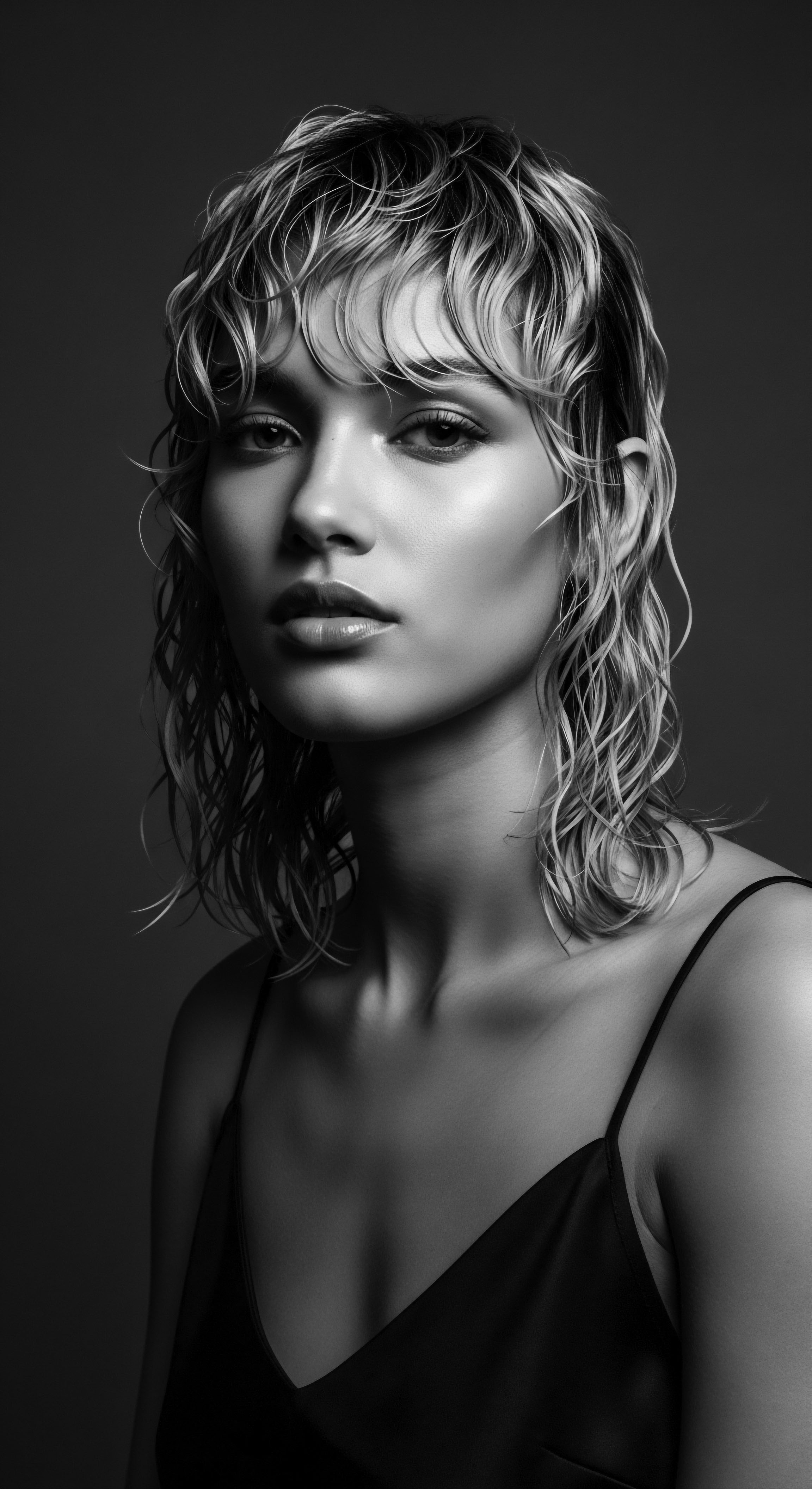
Academic
The academic Definition of Textured Hair Care Heritage transcends a simple historical account, positing it as a complex, dynamic ethnological construct that intertwines biophysical hair morphology with socio-cultural, political, and economic forces across the African diaspora. It is an intricate system of embodied knowledge, resilience, and identity formation, where the care and adornment of textured hair serve as a profound locus for cultural preservation, resistance, and self-actualization. This rigorous examination necessitates an interdisciplinary lens, drawing from anthropology, ethnobotany, sociology, and dermatological science to fully comprehend its multi-layered significance.
From an academic perspective, the Meaning of Textured Hair Care Heritage is not static; it is a continuously negotiated understanding, shaped by historical oppression, movements for liberation, and contemporary expressions of identity. It represents a profound counter-narrative to Eurocentric beauty hegemonies, asserting the inherent beauty and scientific viability of hair that defies straight-strand norms. This involves a critical analysis of how colonial and post-colonial systems attempted to devalue and erase indigenous hair practices, and how communities of color consistently resisted these pressures through the preservation and evolution of their unique care traditions.
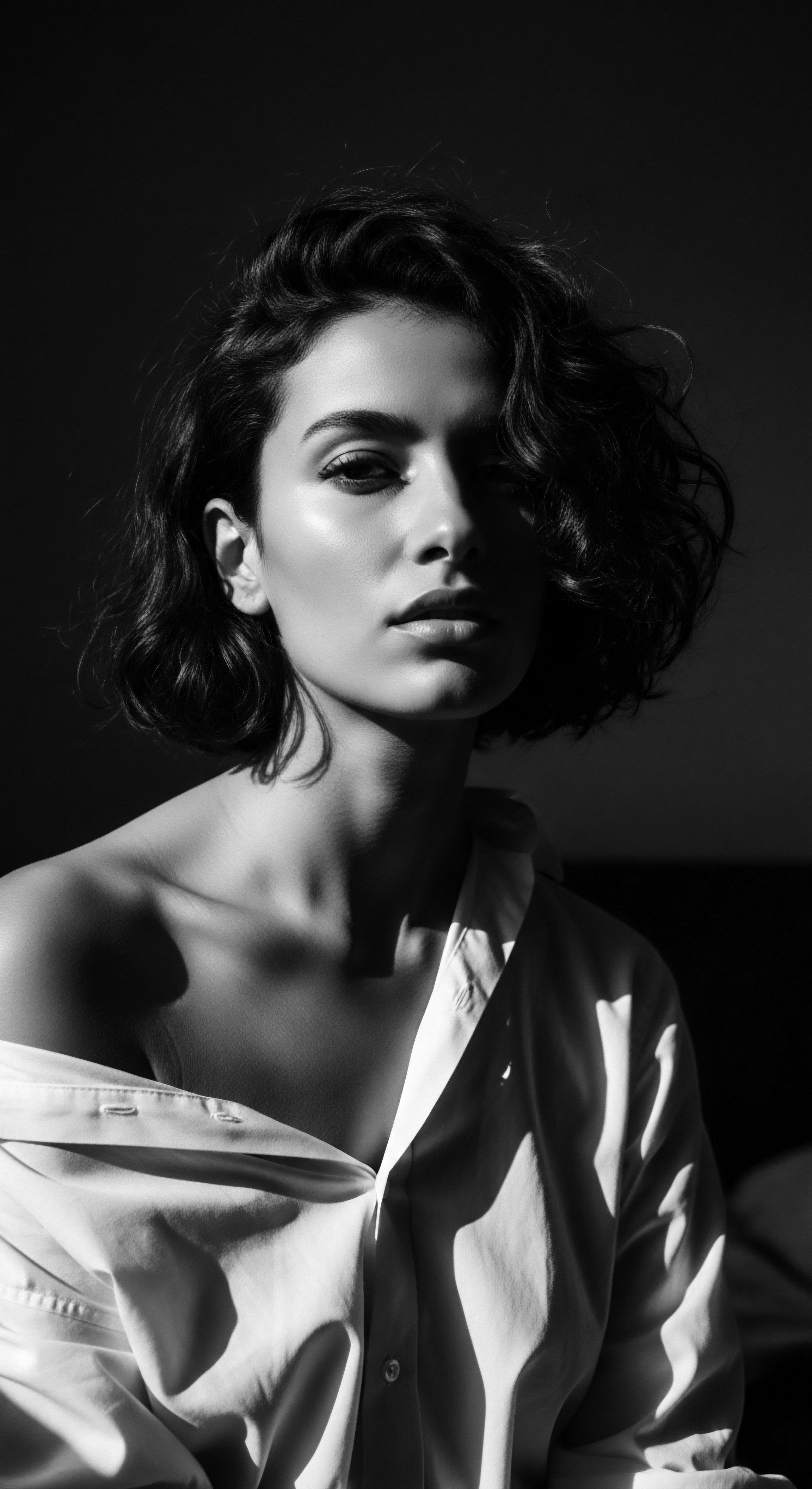
Biophysical Realities and Ancestral Solutions
The distinct biophysical characteristics of textured hair – its elliptical follicle shape, uneven cuticle layer, and propensity for dryness due to coil patterns that hinder sebum distribution – inherently necessitate specific care approaches. Academic inquiry into Textured Hair Care Heritage often begins with this biological foundation, then traces how ancestral communities developed sophisticated, empirically derived solutions. For instance, the systematic application of oils and butters, often accompanied by protective styling, directly addressed the hair’s moisture retention challenges long before the advent of modern cosmetic science. This ancient wisdom, rooted in direct observation and generational refinement, represents an indigenous science of hair care.
A rigorous academic examination reveals that the ancestral methods within Textured Hair Care Heritage were not merely aesthetic but possessed profound dermatological and trichological benefits. Many traditional botanical ingredients, now subject to modern pharmacological study, exhibit properties such as anti-inflammatory, antimicrobial, and moisturizing effects, directly contributing to scalp health and hair integrity. The very act of detangling with natural combs or fingers, and sectioning hair for protective styles, minimizes mechanical stress, thereby reducing breakage and preserving length. This holistic approach, integrating care for the scalp, strand, and overall well-being, forms a core academic understanding of its enduring efficacy.

Cultural Cartography ❉ Hair as a Map of Freedom and Identity
One of the most compelling manifestations of Textured Hair Care Heritage as a site of profound socio-political action is exemplified by the enslaved communities in colonial South America. The story of the Palenqueras of San Basilio de Palenque in Colombia offers a compelling case study. Under the leadership of Benkos Biohó, an escaped African king, this community established the first free settlement in the Americas. A significant, yet often overlooked, aspect of their resistance involved the ingenious use of hair braiding as a covert communication system.
As documented by historians and cultural scholars, Palenquera women would meticulously braid intricate patterns into their hair, which served as actual topographical maps of escape routes through the dense jungles and swamps surrounding Cartagena (Grajales, 2023). These hairstyles, far from being mere adornments, functioned as detailed guides, indicating paths, rivers, and strategic hiding places for fellow enslaved individuals seeking freedom.
Moreover, the practicality extended beyond cartography. Within these complex braids, women would conceal precious items such as gold nuggets, harvested from their forced labor in mines, and vital seeds of native plants. The gold provided a means of economic independence for those who reached freedom, while the seeds ensured future food security, allowing the establishment of sustainable agricultural practices in the newly formed palenques.
This dual function of hair as both a communicative device and a survival mechanism elevates the academic Explication of Textured Hair Care Heritage beyond personal grooming to a powerful act of collective liberation and nation-building. The act of braiding became a silent, yet potent, act of resistance, transforming the very texture of their hair into a living archive of defiance and hope.
The Palenqueras’ use of braided hair as escape maps and seed caches illustrates the profound role of Textured Hair Care Heritage in resistance and survival.
The academic Specification of this heritage further examines the impact of forced assimilationist policies, such as the Tignon Laws in colonial Louisiana, which mandated that Black women cover their hair. Such legislation, aimed at stripping identity and enforcing social hierarchy, inadvertently solidified hair as a symbol of resistance. The creative ways in which women adorned their mandatory headwraps, often incorporating elaborate styles beneath them, became a silent yet powerful assertion of their identity and cultural pride. This historical context reveals how Textured Hair Care Heritage is not merely about styling but about the reclamation of selfhood and the assertion of cultural autonomy against oppressive forces.

The Socio-Economic Dimensions of Textured Hair Care Heritage
From an economic standpoint, the Textured Hair Care Heritage has historically been a significant, albeit often informal, sector within Black and mixed-race communities. The exchange of knowledge, services, and homemade products created self-sustaining micro-economies. This communal exchange provided both livelihood and a sense of collective self-reliance, circumventing mainstream industries that often neglected or actively denigrated textured hair. Academic inquiry into this area explores the informal economies of hair braiding, product creation, and knowledge sharing that have sustained communities for centuries.
The emergence of Black-owned hair care businesses, both historically and in contemporary times, represents a direct continuation of this heritage, challenging established beauty industries and providing culturally resonant solutions. These enterprises are not simply commercial ventures; they are often extensions of ancestral practices, providing products and services that honor the unique requirements and aesthetic preferences of textured hair, while also contributing to community wealth and empowerment.
The academic Clarification of Textured Hair Care Heritage also delves into the psychological and emotional impact of hair on identity. For individuals with textured hair, particularly those within the diaspora, hair has often been a site of both profound beauty and deep-seated struggle. The heritage provides a framework for understanding how ancestral practices offer a pathway to self-acceptance and affirmation, countering historical narratives that pathologized natural hair. This involves examining the intergenerational transmission of both care practices and the emotional weight associated with hair, offering insights into pathways for healing and celebration.
Academic scholarship consistently underscores that Textured Hair Care Heritage is a living, breathing entity, not a relic of the past. It continues to evolve, incorporating new scientific discoveries and global influences while remaining anchored in its ancestral roots. This ongoing adaptation ensures its continued relevance and vitality, providing a rich area for future research into ethnobotany, cultural anthropology, and the sociology of beauty.
- Oral Tradition ❉ The primary mode of knowledge transmission, ensuring continuity of techniques and recipes.
- Botanical Wisdom ❉ Deep understanding of local flora for hair and scalp remedies, often predating formal scientific classification.
- Communal Rituals ❉ Hair care as a shared experience, fostering social bonds and cultural identity.
- Protective Styling ❉ Techniques like braiding, twisting, and locing, designed to minimize damage and promote hair health.
This academic lens allows for a comprehensive appreciation of Textured Hair Care Heritage, positioning it as a critical area of study that informs our understanding of human ingenuity, cultural resilience, and the enduring power of identity.
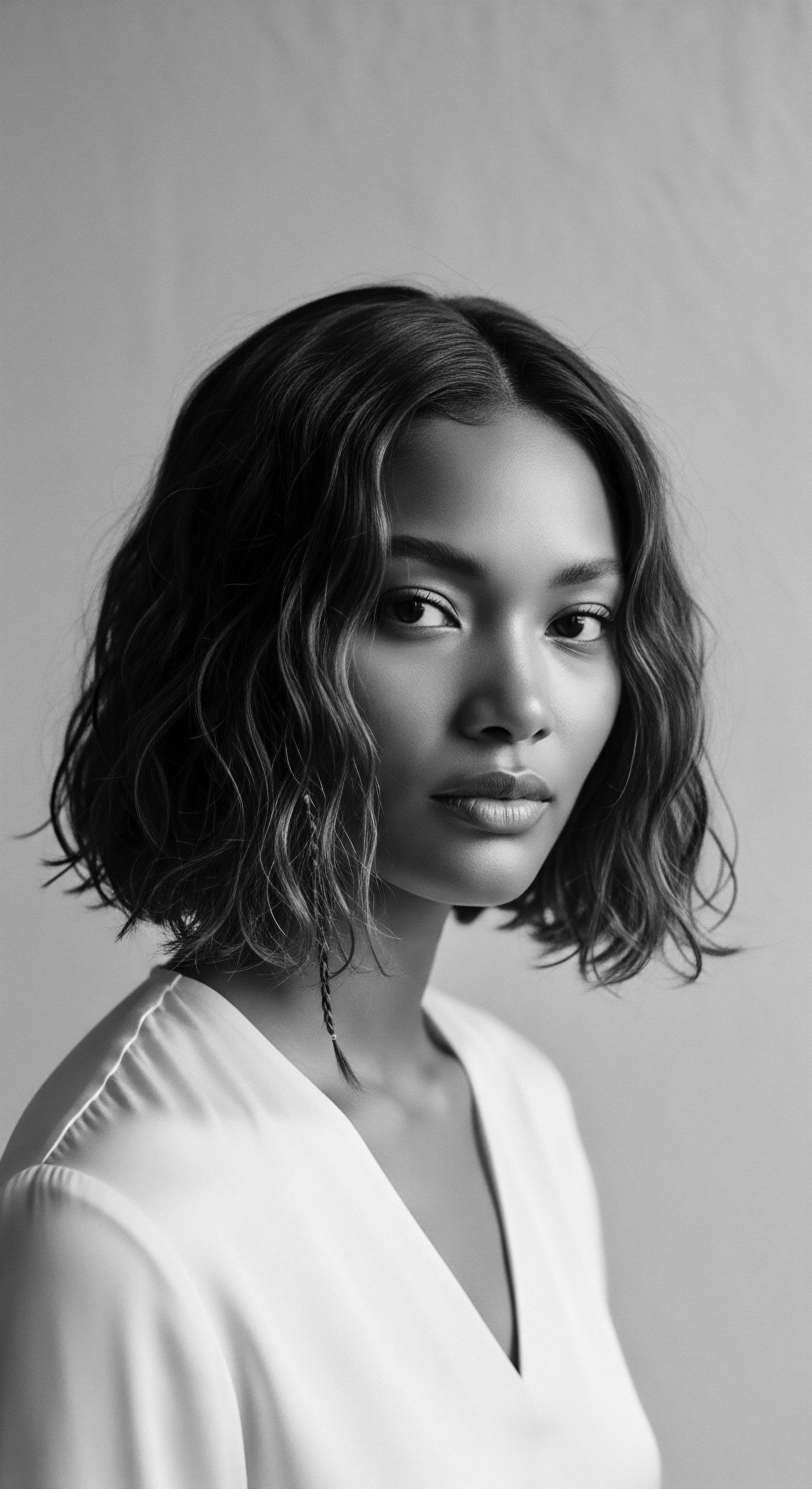
Reflection on the Heritage of Textured Hair Care Heritage
As we consider the vast expanse of Textured Hair Care Heritage, a quiet understanding settles within the soul. It is a testament to the enduring spirit of human connection, an unbroken lineage that stretches from the sun-drenched plains of ancestral lands to the vibrant streets of contemporary cities. Each coil, every curl, and every wave carries within it the whisper of generations, a living archive of wisdom, resilience, and unwavering beauty. This profound reflection invites us to look beyond the superficiality of style and to truly see the deep, spiritual Significance of hair as a part of one’s inherited story.
The journey through this heritage is a reminder that care is not merely a physical act; it is an act of remembrance, a communion with those who came before us. When hands work through textured strands, whether applying ancient oils or crafting intricate patterns, there is an echo of countless hands that performed similar rituals, passing down not just techniques, but love, solace, and strength. This intergenerational connection forms the very heart of Roothea’s ‘Soul of a Strand’ ethos, asserting that true hair wellness begins with honoring its ancestral roots.
The narrative of Textured Hair Care Heritage is a story of adaptation, of finding light in shadows, and of asserting selfhood in the face of adversity. It is a living, breathing celebration of cultural ingenuity, demonstrating how a simple biological feature became a canvas for profound expression, resistance, and collective memory. This continuous unfolding of tradition, blended with contemporary understanding, ensures that the heritage remains a vibrant force, guiding future generations towards a deeper appreciation of their hair’s innate splendor and its powerful ancestral connections.
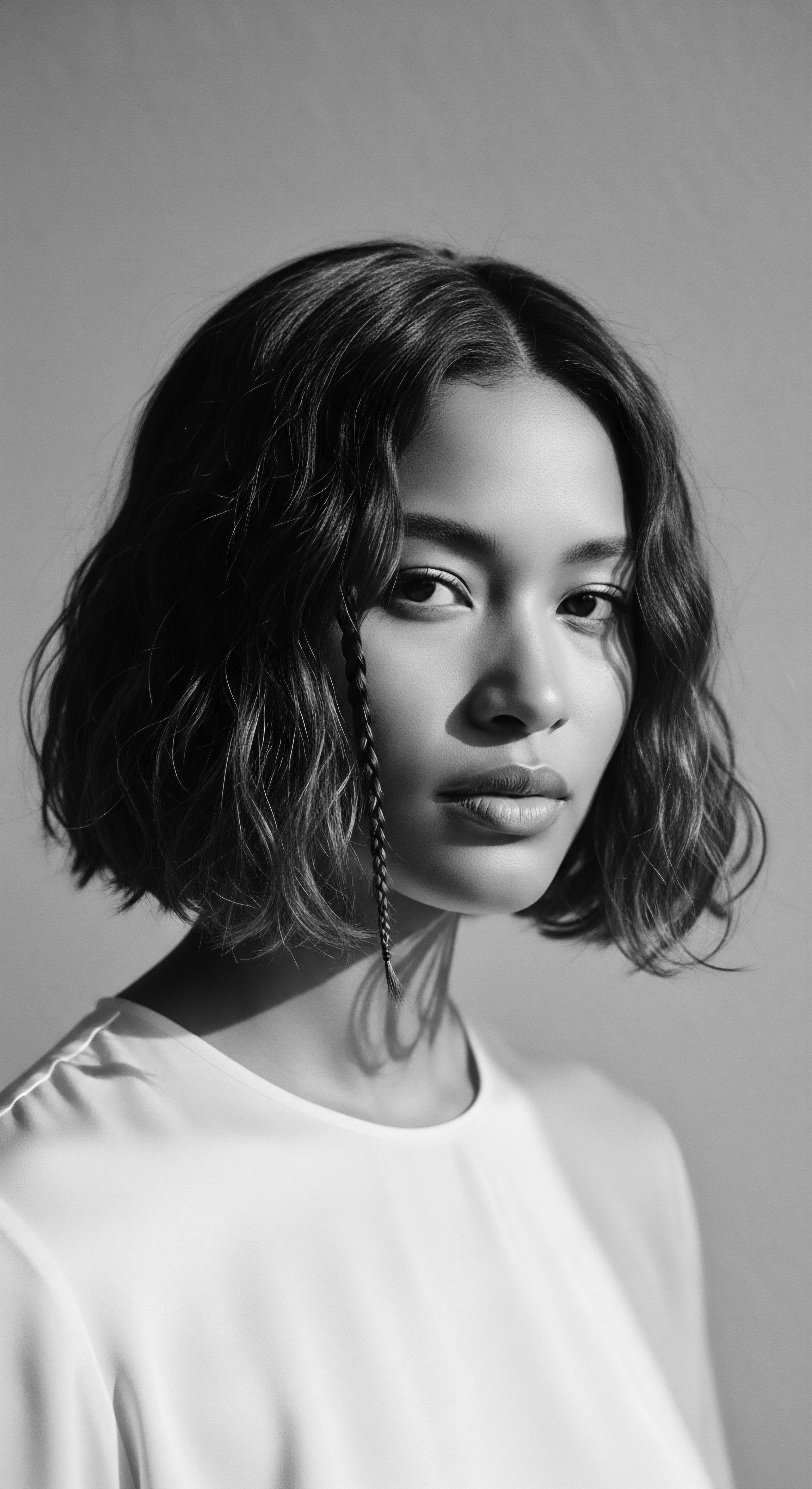
References
- Grajales, S. (2023). The Braids of Freedom ❉ San Basilio de Palenque and the Legacy of Hair as Resistance. University of Cartagena Press.
- Tharps, L. & Byrd, A. (2001). Hair Story ❉ Untangling the Roots of Black Hair in America. St. Martin’s Press.
- Byrd, A. & Tharps, L. (2014). Hair Story ❉ Untangling the Roots of Black Hair in America, Revised and Updated. St. Martin’s Griffin.
- Okeke-Agulu, C. (2015). African Art and the Diaspora ❉ Re-Imagining Connections. Indiana University Press.
- Diawara, M. (2000). African Cinema ❉ Politics & Culture. Indiana University Press.
- Akbar, N. (1998). Light from Ancient Africa. New Mind Productions.
- Blay, K. (2013). Styling Black Hair ❉ A Cultural and Historical Perspective. Duke University Press.
- Oppong, J. R. & Resch, S. (2004). Indigenous African Knowledge Systems and Practices. University Press of America.
- Selin, H. (2008). Encyclopaedia of the History of Science, Technology, and Medicine in Non-Western Cultures. Springer.
- Robbins, A. S. & Brown, C. S. (2010). African American Hairstyles and Hair Care ❉ A History. University of Georgia Press.
{ “word_count” ❉ 3840
}
